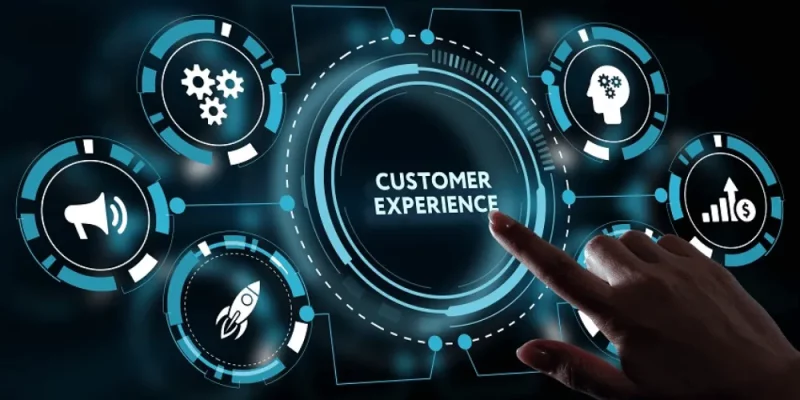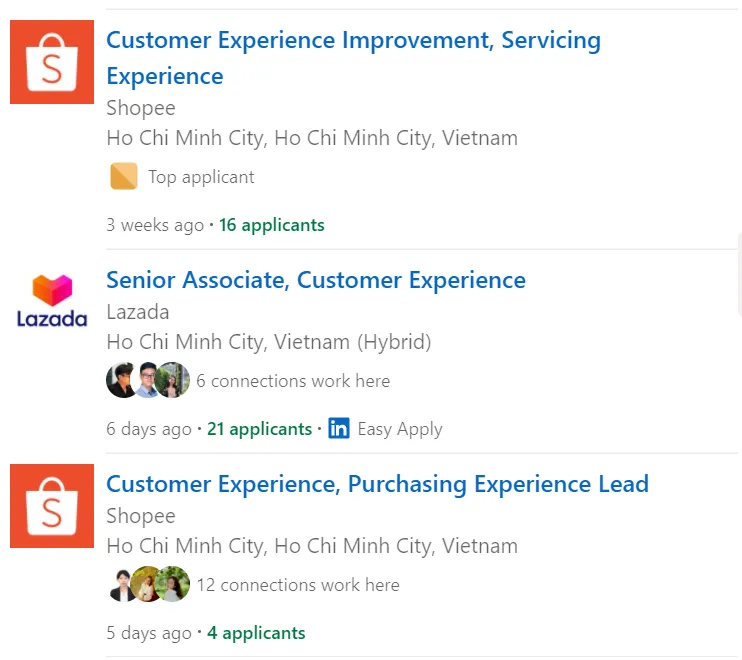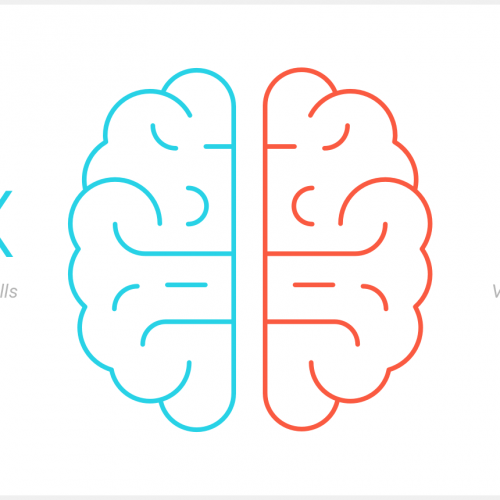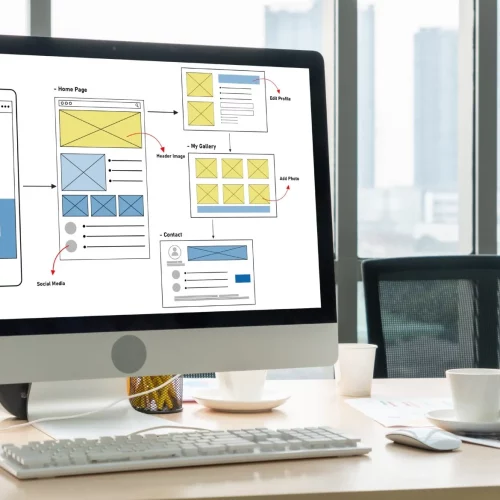
UX (User Experience) is no longer a strange term for design teams as well as cross-functional teams*. However, the concept of CX (Customer experience) seems new to people working in the field of Product. Meanwhile, CX is a new trend and is getting more and more attention nowadays. Product today tends to focus more on delivering a holistic customer experience (CX) than just the user experience (UX).
In fact, when searching on Linkedin with the keyword CX, quite a lot of results show many different positions from Graphic UI, Planner, Interior Design, to CS customer service team all related to the term. This. So today, Careerly will work with you to learn more about this term, find a way to distinguish between CX and UX, and learn an example of a good CX, which hopefully can bring readers inspiration to find Learn more about CX.

What is CX customer experience?
Customer experience ( CX – Customer eXperience ) can be summed up as a method of communication between customers and businesses on every stage of the customer journey from marketing, buying-selling to all related services. regarding the product. In a nutshell, CX includes all experiences during customer interaction with the brand/product. For example, the experience of seeing an advertisement and then becoming interested in the product, or the experience of going to a consultation in the store, the experience of customer support service through the website, the experience of solving problems for customers, counting product convenience, etc. are all listed in CX.
The field of CX is very broad, it includes the customer’s experience before using the product, when the customer becomes aware of the product, until the beginning of the behavior of searching for product reviews or listening to the product. information from others, search about the product until directly buying the product, then stop using the service, or continue to buy again. All of these processes include CX.
>>> Read more Customer Experience (CX): Customer Experience Management
Why is CX important?
In the process of using a service or buying a product, all the physical or psychological experiences of a customer affect customer loyalty. Customers want to feel the connection between themselves and their favorite brands, want the company of the product to grasp their own needs and respect and meet those needs. CX is the most powerful weapon to create a competitive differentiator in the market, so every business needs to personalize the experience on every customer journey and must constantly test their CX strategy to deliver results. provide interactions that make customers happy or not.
These interactions in the long run will comprehensively affect the perception and impression of customers about the brand. If from the first time a potential customer (not even an official customer) comes into contact with a brand, there is a good CX experience that makes customers feel respected, then the brand is one step closer. more to success.
Difference between UX and CX?
Basically UX (User eXperience – user experience) includes the overall feeling and experience of the user when using a certain service/product directly/indirectly. UX has three characteristics that are subjectivity, coherence (contextuality), and holistic.
Meanwhile, CX (Customer eXperience – customer experience) is the sum total of the customer experience experienced in a continuous interaction relationship between the customer and the service provider. This interaction is formed from 3 parts which are the customer journey, the touch point of interaction between the customer and the brand, and the customer experience environment (including the digital environment). ).
1. UX (User eXperience):
- Audience: Experience using the product
- Purpose: Optimizing the performance of the product/service, increasing the competitiveness of the product by providing a satisfied user experience.
- UX team work: user research, persona building, user journey map design, prototype design, usability testing, information architecture, interaction design, design direction , design guidelines.
- Who is involved in UX?: usability engineer, UX researcher, information architect, interaction designer, UI designer, UI developer
2. CX (Customer eXperience)
- Audience: The entire customer life cycle experience with the company, which can be viewed as including UX
- Purpose: create customer value through personalized experience and good interaction with customers, enhancing competitiveness and differentiation for businesses.
- CX team work: customer research, persona building, customer journey design, prototype design and test, space design, business case, KPI, business strategy.
- Who is involved in CX?: marketing manager, product manager, market researcher, business analyst, CRM manager, customer strategy manager.
The audience of UX and CX are different, so the work of both is also different.
Basically, the UX implementation process will include user research to decide on a representative persona, and then test the user. Then proceed to design the user Journey map, user scenario, information architecture (IA) and interaction design, then give design direction and guidelines to apply in the product.
Meanwhile, CX is similar to UX in that through customer research to decide on a persona, then put service experiences such as brand touchpoints of products, warranty services, customer support services, into the journey. map. However, CX must pay attention to the overall customer experience, so the CX team also needs to focus on business areas such as building business strategies and branding, KPIs of the company.
To make it easier to understand, we can take a look at the following example:
Users find out the phone through the brand’s website, then go to the store to see the product in person, feel satisfied, so they bought the product, in this process, if viewed from the UI UX perspective, we We can analyze it as follows:
- Website product testing stage: In-store design (UI), music impressions in-store (UX)
- In-store staff consultation period: Impressions during consultation (CX)
- Product testing phase on hand: Design of the phone, real feeling of trying the product (UI), impression of the product (UX)
- The stage of purchasing products at the checkout counter: Employee impressions when buying products (CX)
=> The sum of all the above processes can be called CX.
What is a good CX?
Any business needs to prepare a good CX strategy that should be prepared so that it can deliver interactions that meet or exceed customer expectations, thereby enhancing customer satisfaction and loyalty. of the customer.
So what does a good CX strategy need?
A good customer experience should include functionality that makes it easy for customers to communicate with the responsible person in the company through any device, anytime, anywhere, in addition it can be a process experience Simplified purchase, customers have the choice of self service (self service) and or support from company staff (customer service), which can also be an effective marketing campaign.
Customers will bring loyalty to the company’s products, but in return they must be rewarded for that loyalty. Therefore, the CX strategy should use customer loyalty (here can be understood as the customer’s experience history when using the product/service) to create new values, anticipate and respond to customer needs. meet the future needs of customers that at the present time they have not even thought about.
For example, when buying products online, what customers often wait for the most is the “shipping time” of the product, so to bring a better CX experience to customers, ecommerce businesses often add more. estimated delivery time, instead of leaving the customer wondering about the delivery time in the customer consultation section. Even sometimes the expected delivery time provided to the customer may be later than actual to create a sense of satisfaction for the customer about the fast arrival of the order.
Epilogue:
Although CX may be different from UX in some ways, but CX and UX must always go together, the CX team and the UX team need to work together to bring the maximum effect to the customer/user. One of the keys to creating a great CX experience is seamlessness because customers don’t see the product experience as discrete interactive steps but as a seamless whole. In other words, at each customer touchpoint (touchpoint) must be connected smoothly, so that customers get the best experience whether offline or digital.
Team UX brings a better experience to users about the product while CX brings a better experience to customers in terms of all aspects from image to service of the brand in particular and the company in general.
One final formula that we should keep in mind to create a better experience overall for our customers is CX+UX = BX (Better eXperience) .




